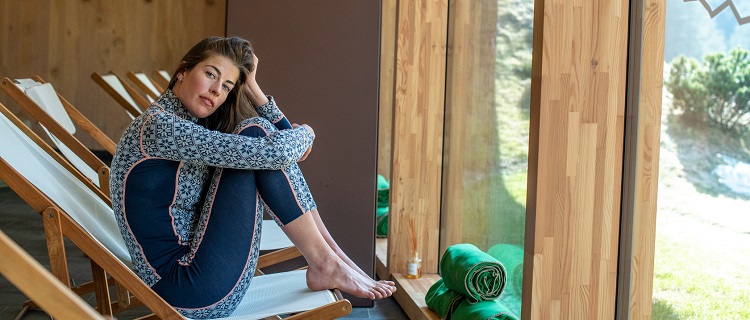There are many Merino breeds of sheep, each having their distinct characteristics and distinctive characteristics. Here are some of most well-known Merino sheep breeds and their differences. Spanish Merino: The Spanish Merino, one of the most ancient Merino species, is famous for its fine wool production and its high yield. This breed is adaptable to a variety of conditions and also is highly resistant to illnesses.
American Merino: The American Merino breed was developed in the United States around the 19th century. It is renowned for its fine, hardy wool. The breed is well-suited for colder weather and is resistant to many common sheep diseases.
Saxon Merino-The Saxon Merino Merino is a fine-boned Merino sheep breed that is famous for its fine and soft wool. This Merino breed is smaller than the others and can tolerate hot and dry environments.
Peppin Merino- This Australian breed was developed in 1921. The breed is well-known for its wool of high quality, and is particularly well-suited for Australia's heat and dry climate.
Rambouillet The Rambouillet Merino sheep breed was developed in France in 18th century. This breed is famous for as tough and able to adapt to a range of environments. Rambouillet wool is generally rougher than other Merino species, yet it's still very prized for its superior quality.
Polwarth - Polwarth is a Merino sheep breed, was developed in Australia in 1922. The breed is renowned for its silky, lustrous and warm wool. It is especially well-suited to the humid, cooler climate of southern Australia.
The Merino shearers' distinctive traits and capabilities are based on their breed as well as the conditions they reside in. Breeders usually select for certain traits such as soft wool, hardiness, and adaptability to create innovative Merino breeds that are suited to different conditions and needs.

What Are The Base Layers Of Merino Wool Used In Clothes?
Merino wool is an excellent base layer option for clothing because of its moisture-wicking and breathability, natural odor resistance and breathability. Here are a few Merino and Merino wool baselayers. They're usually made from fabrics that are breathable and lightweight that makes them simple to layer over other clothes.
The Midweight base layer - They are constructed from midweight Merino and Merino wool base layers. They are suitable for use in cooler climates. They typically consist of more dense and more insulation fabric that offers warmth and comfort during colder temperatures.
Base layers that are heavyweight: Heavyweight Merino-wool base layers are for use in extremely cold weather conditions. They are constructed of thick, warm fabric which gives insulation and shields from all elements.
Base layers 3/4 length- 3/4 length Merino wool base layers are designed to provide warmth and comfort to the lower body without adding unnecessary bulk. They are ideal for layering underneath shorts or trousers in colder temperatures.
Long Sleeve Base Layers- Long sleeve Merino wool base layers are designed to offer warmth and comfort to the upper body. They typically consist of lightweight and breathable material and can be worn underneath other clothing to provide warmth.
Hooded base layers - Hooded Merino wool base layers offer warmth and protection against the elements. They are typically fitted with a hood that can fit under a helmet, or other headgear.
Zip-neck base layers Zip-neck Merino sheep wool base layers are designed to regulate temperature and provide ventilation. They usually have an open neckline that can be closed or open according to the weather conditions.
Merino Wool base layers can be bought in a range of designs and weights to fit different preferences and needs. To ensure that you get the right quality and appearance it is important to consider the weather conditions as well as the activity level you are engaging in. Go See the top rated best base layers tips for more info including women's wool base layer top, woolx nora leggings, scentblocker merino wool base layer, scent blocker merino wool, merino wool long underwear women's, merino base wear, ll bean merino wool base layer, icebreaker bodyfit, men's merino 150 base layer long sleeve, meriwool merino wool, with more- 1289deb and .

How Can You Determine The Most Suitable Base Layer For Skiing That Combines The Merino Wool With The Himalayan-Yak Wool?
There are many factors that you should consider when choosing the right ski base layer made of Merino wool or Himalayan Yak wool. Here are some of the most important things to keep in mind: Weather conditions Consider the weather and temperature conditions that you will be skiing in. Base layers that have more insulation are recommended when it is very cold. For instance, one that contains Himalayan Himalayanyak wool. It is possible to choose an affluent Merino wool base layer if the weather is mild.
Activity level- Think about your level of physical activity and how much you tend to sweat. A base layer with moisture-wicking properties such as Merino wool might be better when you sweat heavily.
Comfort- Select the base layer that is both comfortable and snugly fitting. Base layers must be flexible enough to move with you, and offer full motion. It's important to avoid anything that feels too restricting or tight, since this could limit your movement and create discomfort.
Personal preference: The combination of the top base layers is dependent on the individual. A base layer with more insulation could be preferred by some people while others prefer a lighter layer. Test different combinations to see what feels most comfortable and effective for your requirements.
Overall, the best ski base layer mix consisting of Merino wool and Himalayan yak wool will depend on your individual needs and the specific conditions you will be ski-ing in. Consider the weather, levels of activity, comfort, and personal preferences to find the ideal base layer for you. See Follow the top cool training on hiking mid layer for more examples including women's merino 150 base layer long sleeve, airblaster merino ninja suit women's, mens merino wool long sleeve base layer, merino wool polyester blend base layer, drirelease merino blend paradox, reddit merino wool base layer, womens smartwool 250 base layer, merino wool base layer bottoms mens, merino base layer running, smartwool merino 150 tee, and more- and Good Advice For Picking Between Yak And Merino Wool.

What Are The Other Fabrics That Are Available To Be Used In Yak Wool Or Merino Clothing? Are They Better?
Although there are many alternatives to Merino wool or Himalayan Yak wool to use in ski clothing, they might not be as efficient in keeping you dry and warm on the slopes. There are several alternatives and a few reasons why they could be inferior Cotton. Cotton is a standard fabric for clothing, but it's not a great choice for skiing. It is extremely absorbent and can retain moisture. This can lead to being cold and wet. Cotton is not an insulation, and it won't keep you warm in colder climates.
Polyester-Polyester is a fabric made of synthetic material that is used to make ski clothes. While polyester is quick-drying and moisture-wicking, it doesn't offer the same amount of warmth and insulation as Merino wool or Himalayan yak wool. Some people find polyester less breathable or more comfortable than natural materials.
Nylon-Nylon is a fabric made of synthetic material that is known for its durability, resistance to abrasion and toughness. While it can be used for ski clothes but it does not offer much in the way of warmth or insulation. It is less breathable than natural fibers such as Merino Wool, and is uncomfortable to wear for extended durations.
Fleece- Fleece can be used as a layering fabric for skiing. It's not as effective as natural fibers like Merino wool or Himalayan Yak wool, however it can provide warmth and insulation. A lot of people consider fleece to lack breathability and is more likely than natural fibers to trap moisture.
Overall, while there are several alternative fabrics to Merino wool as well as Himalayan yak wool that can be used for ski clothes, they might not be as effective in keeping you dry, warm, and at ease on the slopes. Merino wool, Himalayan yak wool, and other natural fibers are better for ski clothing. They offer superior insulation and warmth, as well as the ability to regulate moisture, breathability and warmth.

